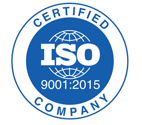Pharmaceutical and biotech companies face a dynamic regulatory landscape as they evaluate where to seek clearance or approval first. In the coming years, regulatory shifts, evolving technologies, and changing market demands will shape the strategic pathways companies choose. Let’s explore the pros and cons of entering the U.S. market first compared to other major markets like the EU, China, and Japan, with a forward-looking perspective on 2025 and beyond.
Advantages of Entering the U.S. Market First
- Largest Market with High Revenue Potential
The U.S. remains the world’s largest pharmaceutical and biotech market, representing nearly 40% of global spending. Success in the U.S. can provide significant revenue, supporting R&D for subsequent expansion into other markets.
- FDA as a Global Regulatory Benchmark
The FDA’s reputation as a stringent regulator often lends credibility to companies worldwide. Gaining FDA approval can enhance a product’s perceived value, making it easier to enter markets where the FDA’s standards are respected or partially adopted.
- Accelerated Pathways for Innovation
The FDA offers expedited approval pathways, such as Fast Track, Breakthrough Therapy, and Priority Review, which can accelerate timelines for drugs addressing serious or life-threatening conditions. For biotech companies working on novel therapies like gene editing or immunotherapy, these pathways can reduce the time and cost required to bring innovative products to market.
- Investment Appeal for Emerging Biotech
FDA approval often attracts investors, especially for early-stage biotech companies. U.S. venture capital firms and public markets, like NASDAQ, are highly receptive to FDA-cleared products, boosting access to funding for further expansion.
- Robust IP Protection and Market Exclusivity
The U.S. offers strong patent protection and additional market exclusivity for novel drugs and biologics. This exclusivity can protect early-movers from competition, helping companies establish a foothold and recoup development costs.
Disadvantages of Entering the U.S. Market First
- High Regulatory Hurdles and Development Costs
FDA requirements are among the strictest globally, and the associated costs—both in terms of time and resources—are substantial. For instance, the FDA’s focus on clinical trials and post-market safety data can stretch development timelines and increase financial strain, particularly for smaller companies.
- Complex and Lengthy Review Process
While expedited pathways exist, the standard FDA review process can take longer than that in other markets, which may delay revenue generation. Certain therapeutic categories, such as biosimilars, still face prolonged approval timelines in the U.S. relative to Europe and other regions.
- Intensive Post-Market Surveillance
The FDA’s robust post-market requirements, including Risk Evaluation and Mitigation Strategies (REMS), can add operational and financial burdens, especially for drugs with potential safety concerns. This requirement extends beyond initial approval and can affect long-term market strategy.
- Risk of High Competition
The U.S. market is highly competitive, with many companies vying for a share. While entering the U.S. first can position a company as a market leader, competitors with similar products may soon follow, intensifying pricing and innovation pressures.
Advantages of Entering the European Market First
- Faster Pathway for Biosimilars and Complex Drugs
Europe, especially through the European Medicines Agency (EMA), has established a framework that supports faster approvals for biosimilars and some biologics. Companies in these therapeutic areas may find Europe a more accessible entry point, enabling earlier market access and revenue generation.
- Harmonized but Flexible Regulatory Standards
While EMA oversight applies across the EU, individual member states can offer tailored market access policies, allowing flexibility for pricing, reimbursement, and launch strategies. For drugs targeting specific populations, this regional approach can enable a strategic, phased rollout.
- Broader Acceptance of Real-World Evidence
The EMA increasingly accepts real-world evidence (RWE) to support drug applications. This shift can reduce the burden of large-scale randomized clinical trials, potentially accelerating timelines and reducing costs, particularly for companies with resource constraints.
- Strategic Advantage in Parallel FDA Submissions
Some companies initiate the regulatory process with the EMA first, using clinical data generated for the EMA application to support a later FDA submission. This strategy can yield insights and provide early revenue to help offset the high cost of the U.S. approval process.
Disadvantages of Entering the European Market First
- Complex Reimbursement and Pricing Policies
While the EMA provides centralized approval, each EU country maintains its own reimbursement and pricing guidelines. This variability can complicate market access and limit revenue potential in some regions, compared to the U.S., where companies can achieve higher pricing.
- Stringent Data Requirements for Novel Therapies
For innovative drugs, including cell and gene therapies, the EMA’s data requirements can be stringent, with a heavy emphasis on long-term safety data. This requirement may extend timelines for cutting-edge treatments, particularly those with limited clinical history.
- Fragmented Market Landscape
Although the EU functions as a single regulatory entity for drug approvals, the market itself is fragmented by language, culture, and healthcare policy. This fragmentation can create additional complexities for marketing and distribution, especially for small to mid-sized companies.
- Limited Brand Recognition in the U.S. and Other Markets
CE-marking is respected within Europe, but an EMA approval does not necessarily carry the same weight in other global markets. For companies looking to establish brand recognition and access markets outside Europe, FDA approval may be more beneficial.
Looking Forward: Regulatory Trends to Watch in 2025 and Beyond
In an era of rapid advancements in drug development and biotechnologies, several key regulatory trends will shape global strategies in the coming years:
- Global Collaboration on Rare Diseases and Pandemic Preparedness
Regulatory bodies like the FDA and EMA are increasingly collaborating to streamline approvals for rare disease drugs, especially gene therapies. For companies developing treatments in these areas, harmonized frameworks could reduce duplicative efforts and improve global access.
- Expansion of Digital Health and Companion Diagnostics
As digital health grows, regulatory agencies are defining clearer pathways for products like digital therapeutics and AI-driven diagnostics. In both the U.S. and Europe, regulators are working toward frameworks that balance innovation with safety, allowing companies to better integrate these tools into their product portfolios.
- Real-World Evidence (RWE) in Drug Approvals
Both the FDA and EMA are expanding the role of RWE in the drug approval process, with Japan and other regions expected to follow. Companies may leverage real-world data to expedite approval processes and enhance post-market monitoring, particularly for high-cost therapies.
- Consolidation of Asia-Pacific Regulatory Standards
The Asia-Pacific region, led by Japan and China, is moving toward regional harmonization of drug approvals. Companies entering these markets in the coming years will benefit from streamlined applications across multiple countries, opening new revenue channels outside traditional Western markets.
Conclusion
In 2025 and beyond, regulatory strategies will require an even sharper focus on balancing costs, time-to-market, and global reach. The decision to pursue U.S. or EU approval first—and possibly other markets, such as Japan or China—will continue to depend on a company’s therapeutic area, financial position, and target patient population. By staying informed of regulatory trends and leveraging streamlined pathways where available, pharmaceutical and biotech companies can better navigate the complexities of bringing life-saving therapies to a global audience.
If you need any assistance with respect to Quality or Regulatory Compliance matters, please contact us at PRP. We understand how challenging it can be to maintain compliance while managing your day-to-day operations. We have a large, experienced team of QA/RA consultants throughout the country who can seamlessly integrate with your team to fill any gaps in expertise or bandwidth, ensuring you stay on track with your compliance goals. We would welcome the opportunity to work together!


